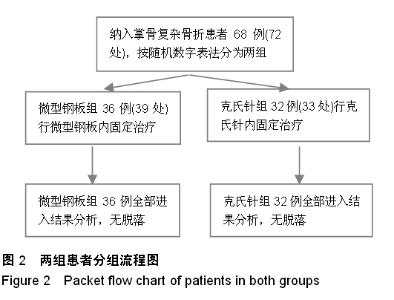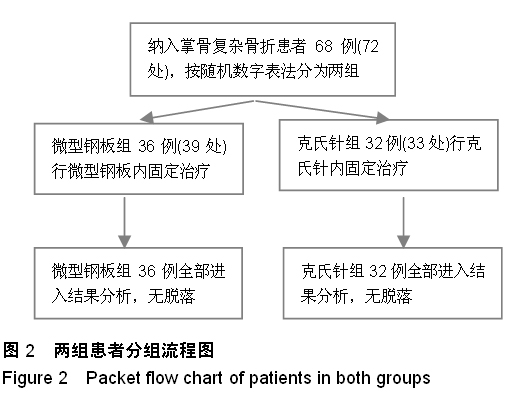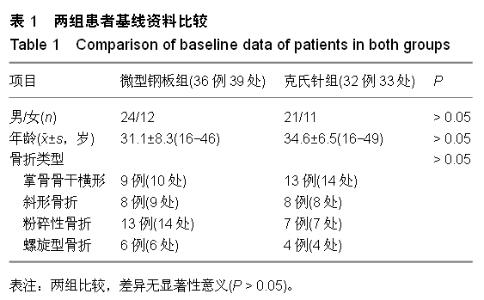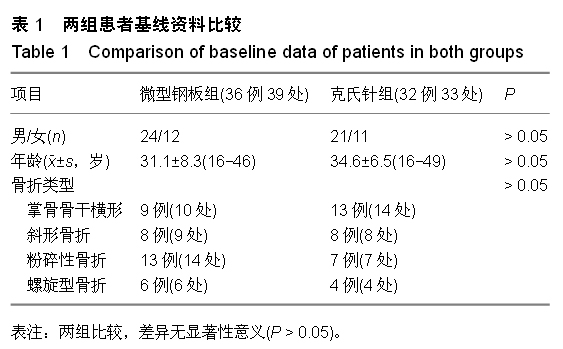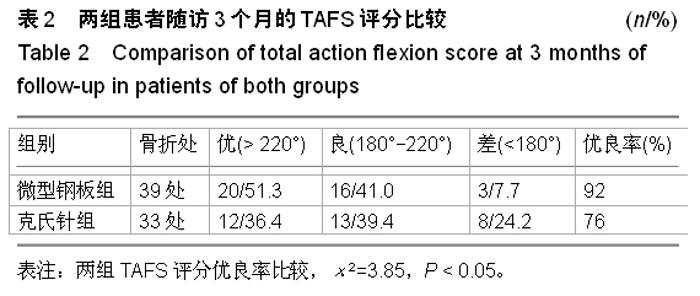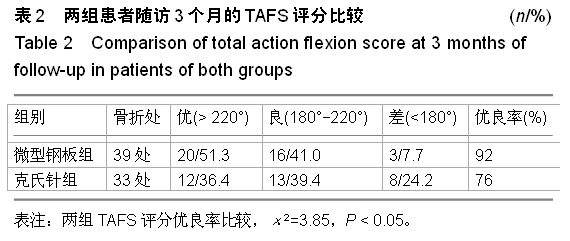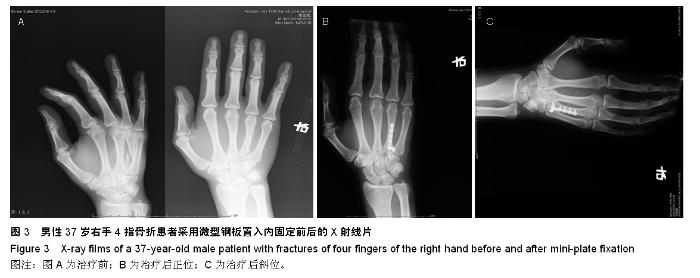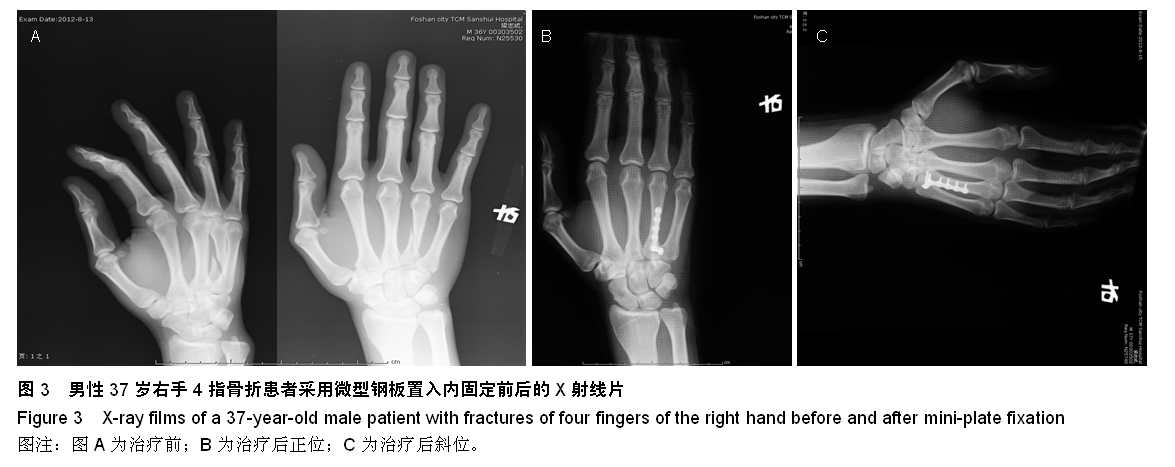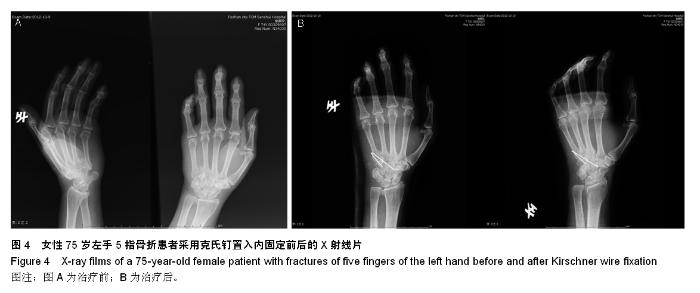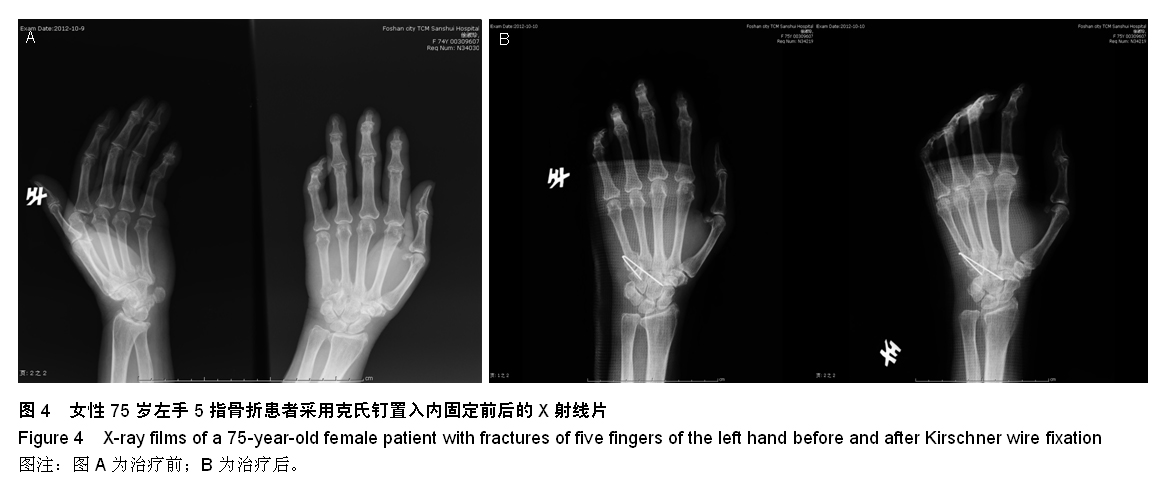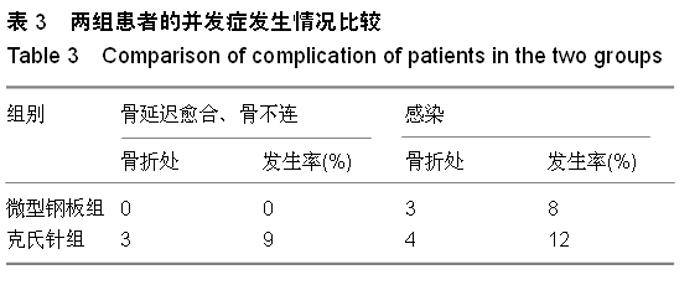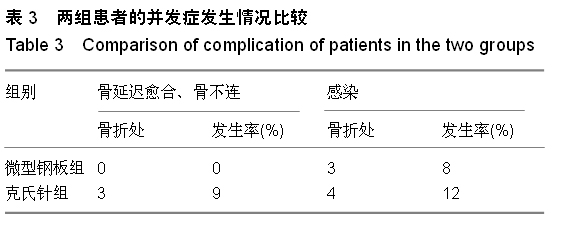| [1] Prevel CD, Eppley BL, Jackson JR, et al. Mini and micro plating of phalangeal and metacarpal fractures: a biomechanical study. J Hand Surg. 1995;20(1): 44-49.
[2] 赵根隆,刘文豪,曾开等.微型钢板与克氏针内固定治疗掌指骨骨折的疗效对比分析[J].中国骨与关节损伤杂志,2013,28(1): 90-91.
[3] 张西龙,曹一唯,何学艺等.微型钢板与交叉克氏针内固定治疗掌骨骨折临床比较[J].新乡医学院学报,2009,26(1):71-72.
[4] 童卫华,郭彩群,李祖国,等.克氏针交叉固定治疗股骨髁上骨折疗效观察[J].中华全科医学,2012,10(12):1907-1908.
[5] 梁晓旭,沙德锋,姚阳.手部骨折165例AO微型钢板内固定治疗分析[J].中国误诊学杂志,2008,8(13):3161-3161.
[6] Xu J, Zhang C.Mini-plate versus Kirschner wire internal fixation for treatment of metacarpal and phalangealfractures in Chinese Han population: a meta-analysis. J Orthop Surg Res. 2014;9:24.
[7] Ba?ar H, Ba?ar B, Ba?ç? O, et al. Comparison of treatment of oblique and spiral metacarpal and phalangeal fractures with mini plate plus screw or screw only.Arch Orthop Trauma Surg. 2015;135(4):499-504.
[8] Soni A, Gulati A, Bassi JL, et al. Outcome of closed ipsilateral metacarpal fractures treated with mini fragment plates and screws: a prospective study. J Orthop Traumatol. 2012;13(1): 29-33.
[9] Afshar R, Fong TS, Latifi MH, et al. A biomechanical study comparing plate fixation using unicortical and bicortical screws in transversemetacarpal fracture models subjected to cyclic loading. J Hand Surg Eur Vol. 2012;37(5):396-401.
[10] 从飞,张开放,许玉本,等.微型锁定加压钢板内固定治疗复杂性掌指骨骨折[J].中华手外科杂志,2013,29(2):95-97.
[11] 武理国,沈军,傅国海,等. 微型钢板与克氏针内固定治疗掌骨骨折的疗效比较[J].中华手外科杂志,2014,30(2):155-156.
[12] Agarwal AK, Pickford MA. Experience with a new ultralow-profile osteosynthesis system for fractures of the metacarpals and phalanges. Ann Plast Surg. 2006;57(2): 206-212.
[13] 唐烽明,赵栋,谢鹏,等.微型万向外固定器与微型钢板治疗掌指骨关节内骨折脱位的疗效比较[J].中华骨科杂志,2010,29(7): 662-665.
[14] Dona E, Gillies RM, Gianoutsos MP, et al. Plating of metacarpal fractures: unicortical or bicortical screws?. J Hand Surg. 2004;29(3): 216-219.
[15] 黎润超,熊秉刚,黎明华等.克氏针与微型钢板置入内固定治疗掌指骨骨折疗效比较[J].临床和实验医学杂志,2012,11(10): 766-767.
[16] 胡洪涌,韩同坤,阳闽军,等. 克氏针与微型钢板置入内固定治疗掌指骨骨折的比较[J].中国组织工程研究与临床康复,2011, 15(26):4880-4884.
[17] 任唯杰,林君,唐贤翱.指掌骨骨折内固定术后并发症原因分析及对策[J].中国骨伤,2011,13(20):132-133.
[18] Gajendran VK, Szabo RM, Myo GK, et al. Biomechanical comparison of double-row locking plates versus single-and double-row non-locking plates in a comminuted metacarpal fracture model. J Hand Surg. 2009;34(10):1851-1858.
[19] McDonald LS,Shupe PG,Hammel N,et al.The intermetacarpal angle screening test for ulnar-sided carpometacarpal fracture-dislocations. J Hand Surg Am. 2012;37(9): 1839-1844.
[20] Mozaffarian K,Vosoughi AR, Hedjazi A,et al.The safest direction of percutaneous pinning for achieving firm fixing of the fifth carpometacarpal joint.J Orthop Sci. 2012;17(6): 757-762.
[21] 夏卫革,郑勇,曾永新,等.闭合复位经皮克氏针内固定治疗第4、5掌骨骨折[J].实用骨科杂志,2014,20(6):572-574.
[22] Prevel CD, Eppley BL, Ge J, et al. A comparative biomechanical analysis of resorbable rigid fixation versus titanium rigid fixation of metacarpal fractures. Ann Plast Surg. 1996;37(4): 377-385.
[23] Hamilton SC,Stern PJ,Fassler PR,et al.Mini-screw fixation for the treatment of proximal interphalangeal joint dorsal fracturedislocations.J Hand Surg Am. 2006;31(8):1349-1354.
[24] Schaefer M,Siebert HR.Finger and metacarpal fractures: surgical and nonsurgical treatment procedures.J Unfallchirurg. 2000;103(6):482-494.
[25] 姜志刚.掌骨、近节指骨骨折钢板、交叉及单根克氏针固定的生物力学对比[J].中国实用医药,2013,7(5):141-142
[26] 宋永焕,林大木,丁健,等.3D微型钢板内固定治疗掌指骨骨折的近期疗效观察[J].中华手外科杂志,2014,30(2):113-114.
[27] 刘文豪,赵根隆,曾开等.微型钢板与克氏针内固定治疗掌骨骨折的疗效对比分析[J].吉林医学,2014,35(10):2109-2110.
[28] 郭锦明,刘俊,章东明等.小切口撬拨复位克氏针内固定治疗SandersⅡ型跟骨骨折[J].河北医学,2010,16(10):1177-1180. |
